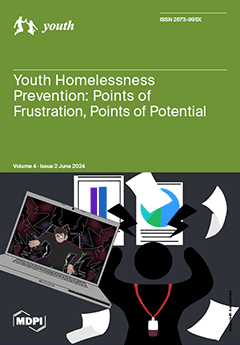In recent times, research has focused on positive youth development (PYD) amidst the deficits of youth. However, little is known about PYD and its potential to predict social engagement. Thus, this study aimed to examine the presence of the 5Cs of PYD (competence,
[...] Read more.
In recent times, research has focused on positive youth development (PYD) amidst the deficits of youth. However, little is known about PYD and its potential to predict social engagement. Thus, this study aimed to examine the presence of the 5Cs of PYD (competence, confidence, connection, character, and caring) and its difference in gender and prediction to contribution, specifically social engagement among family, peers, schools, and community. The sample size consisted of Nigerian youth in University (N = 394, M
age = 18.42, SD = 1.02). The PYD framework served as the theoretical perspective underpinning the study. Questionnaires were administered using the 5Cs model of PYD and contribution items. Data were analysed for descriptive, correlations, and hierarchical regression to examine the predictors of contribution while controlling for demographics. The results showed greater scores in competence, connection, and character for women. Competence and connection (β = 0.56,
p < 0.05) specifically had significantly independent associations with community volunteerism. While the findings highlight the Cs experienced and predictive values among each variable in the Nigerian context, future research could consider how each domain of the 5Cs holistically promotes contribution equally in males and females among diverse Nigerian youth. The research has implications for research, policy, and practice.
Full article




